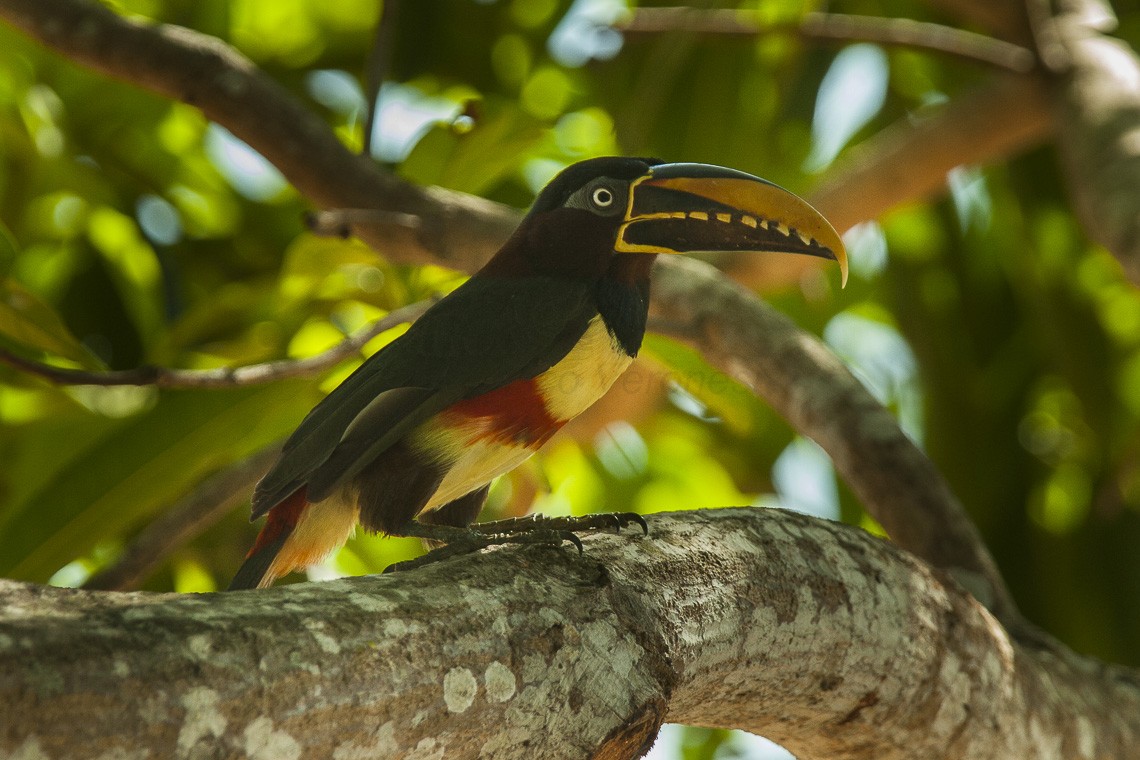Chestnut-eared Aracari
A species of Aracaris Scientific name : Pteroglossus castanotis Genus : Aracaris
Chestnut-eared Aracari, A species of Aracaris
Botanical name: Pteroglossus castanotis
Genus: Aracaris
Content
Description General Info
 Photo By Francesco Veronesi , used under CC-BY-SA-2.0 /Cropped and compressed from original
Photo By Francesco Veronesi , used under CC-BY-SA-2.0 /Cropped and compressed from original Description
The chestnut-eared aracari, or chestnut-eared araçari (Pteroglossus castanotis), is a bird native to central and south-eastern South America. It belongs to the toucan and aracari family (Ramphastidae). The chestnut-eared aracari is a larger, more colorful bird than the black-necked aracari, which it otherwise resembles. 
Size
47 cm
Nest Placement
Cavity
Feeding Habits
Chestnut-eared Aracari mainly consumes tree fruits, often acrobatically hanging upside-down to feed. Their varied diet also includes flower nectar, nuts, insects, and sometimes bird eggs and nestlings, mirroring saffron toucanet predation habits.
Habitat
Chestnut-eared Aracari flourishes in a variety of forested habitats, most prevalent in dense wet forests around water bodies and in floodplains. It adapts well to different stages of forest growth, including secondary forests and disturbed areas like plantations. The species predominantly resides in lower altitudes, typically below 600 meters, but may inhabit upland regions up to 1300 meters in the Andes.
Dite type
Frugivorous
General Info
Feeding Habits
Bird food type

Fruit
Distribution Area
The range of the chestnut-eared aracari is the southern Amazon Basin, especially the southwestern of this region. It is also found in the eastern Andean foothills; a narrowing range extension enters central-southern Colombia by 900 kilometres (560 mi). The southern Amazon Basin range narrows in the southeast to only the upstream half-headwaters of the north-flowing Amazon River tributaries. This range continues southeastwards into the central and southern cerrado and ends in the Paraná River region in eastern Paraguay, Bolivia, southeastern Brazil and the extreme northeast of Argentina. It is very present in Bolivia, notably in the Aquicuana Reserve, located in the Beni Department, near the city of Riberalta, the Capital of the Bolivian Amazon. 
Species Status
Not globally threatened.